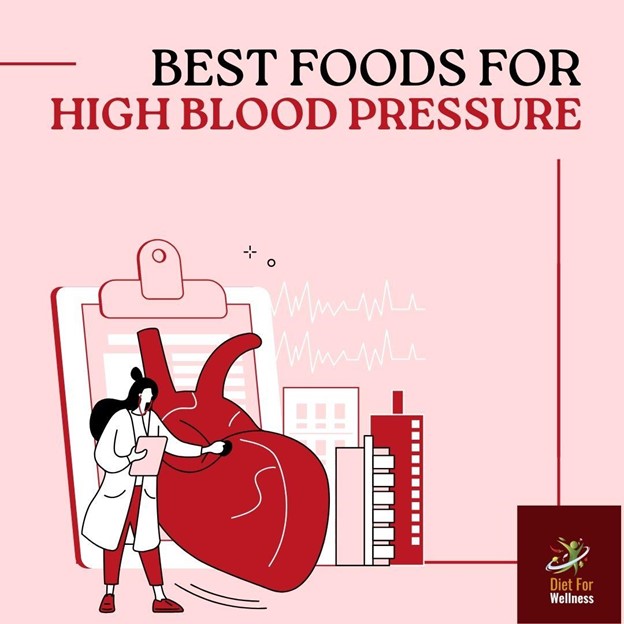Best Foods for High Blood Pressure

Hypertension, commonly known as high blood pressure, stands as the foremost preventable risk factor for heart disease, affecting over 1 billion individuals globally. It’s characterized by systolic blood pressure (SBP) values of 130 mm Hg or higher, diastolic blood pressure (DBP) exceeding 80 mm Hg, or both.
While medications like angiotensin-converting enzyme (ACE) inhibitors are often prescribed to manage blood pressure levels, lifestyle adjustments, and dietary changes can significantly aid in lowering blood pressure and mitigating the risk of heart disease.
Incorporating specific foods into your diet, particularly those rich in potassium and magnesium, may offer valuable support in regulating blood pressure levels.
The DASH Diet
The Dietary Approaches to Stop Hypertension (DASH) diet is often recommended for individuals with high blood pressure. This eating plan emphasizes fruits, vegetables, whole grains, lean proteins, and low-fat dairy while minimizing saturated fats, cholesterol, and sodium.
Let’s see what are the specific foods that make the DASH diet so beneficial for managing hypertension.
- Fruits and Vegetables
Fruits and vegetables are rich in potassium, magnesium, fiber, and antioxidants, all of which contribute to lower blood pressure levels. Incorporate a variety of colorful fruits and vegetables into your diet, aiming for at least 5 servings per day. Berries, leafy greens, bananas, oranges, and avocados are particularly excellent choices.
- Whole Grains
Swap refined grains for whole grains like brown rice, quinoa, whole wheat pasta, and oats. Whole grains are packed with fiber, which helps regulate blood pressure and promotes heart health. They also provide essential nutrients like magnesium and potassium, both of which play key roles in blood pressure regulation.
- Lean Proteins
Opt for lean sources of protein such as skinless poultry, fish, beans, lentils, and tofu. These protein sources are lower in saturated fat and cholesterol compared to red meat and processed meats, making them heart-healthy choices. Fatty fish like salmon, mackerel, and trout are also rich in omega-3 fatty acids, which have been shown to lower blood pressure.
- Low-Fat Dairy
Choose low-fat or fat-free dairy products like milk, yogurt, and cheese to increase your calcium intake without the added saturated fat. Dairy products are excellent sources of calcium and vitamin D, which are essential for bone health and may also have a modest effect on lowering blood pressure.
- Nuts, Seeds, and Legumes
Incorporate nuts, seeds, and legumes into your diet for a dose of heart-healthy fats, protein, fiber, and minerals. Almonds, walnuts, flaxseeds, chia seeds, lentils, and chickpeas are all nutritious options that can help lower blood pressure when consumed regularly.
- Potassium-Rich Foods
Potassium has a crucial role in regulating blood pressure by curbing the effects of sodium. Increase your potassium intake by including potassium-rich foods such as bananas, potatoes, sweet potatoes, spinach, tomatoes, and oranges in your meals.
- Dark Chocolate
Indulge in moderation with dark chocolate, which contains flavonoids that have been shown to improve heart health and lower blood pressure. Opt for dark chocolate with a cocoa content of 70% or higher and enjoy a small square as an occasional treat.
- Herbs and Spices
Season your meals with herbs and spices instead of salt to add flavor without increasing sodium intake. Garlic, basil, oregano, cinnamon, and turmeric are not only delicious but also offer various health benefits, including potential blood pressure-lowering effects.
Conclusion
While making dietary changes alone may not completely eliminate the need for medication to manage high blood pressure, adopting a heart-healthy diet can significantly improve blood pressure control and overall cardiovascular health. Consult with your healthcare provider or a registered dietitian before making any significant changes to your diet, especially if you have existing health conditions or are taking medication. With a balanced approach to nutrition and lifestyle, you can take proactive steps toward better blood pressure management and long-term wellness.
